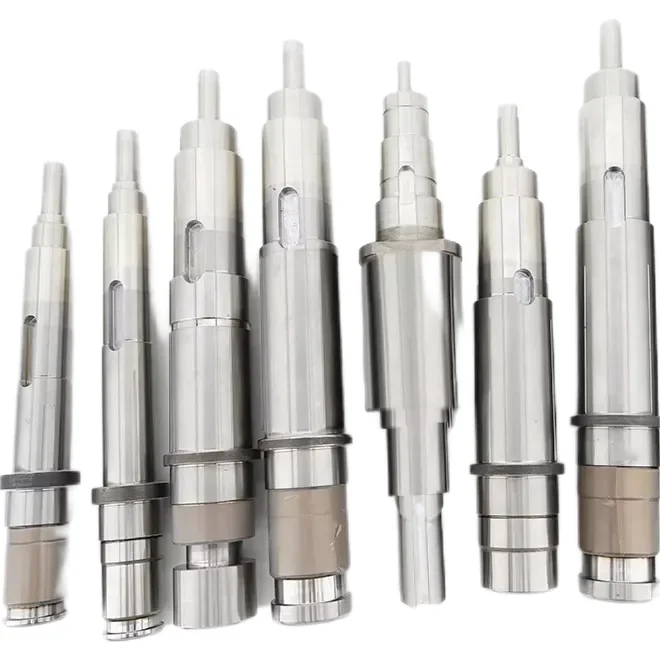- This topic is empty.
-
AuthorPosts
-
2025-10-22 at 5:57 pm #10198
Introduction to CNC Turning Axis Parts
CNC turning axis parts are essential components in precision machining, widely used across industries that demand tight tolerances and high repeatability. These parts are produced by advanced CNC lathes, which rotate the workpiece along one or more axes while cutting tools shape the material. With the ability to handle metals, plastics, and alloys, CNC turning ensures consistent quality, making it the backbone of modern manufacturing. As a professional custom CNC turning parts manufacturing factory, Vibo will share the advantages of CNC turning axis parts for sale, its applications, etc.
The Role of Multi-Axis CNC Turning in Part Production
Unlike conventional lathes, CNC turning axis machines can operate with two-axis, three-axis, or even five-axis systems. The more axes available, the greater the machining flexibility. Multi-axis CNC turning allows for complex geometries, undercuts, and intricate designs without multiple setups. This capability reduces production time and minimizes human error, making CNC turning axis parts a preferred choice for aerospace, automotive, and medical equipment manufacturing.
Key Advantages of CNC Turning Axis Components
The precision and efficiency of CNC turning axis parts offer several benefits:
-
High Accuracy: Capable of achieving tolerances as tight as ±0.01 mm, ensuring reliable product quality.
-
Repeatability: Once programmed, CNC turning can produce identical parts in large volumes.
-
Material Flexibility: CNC lathes work with stainless steel, aluminum, titanium, and engineering plastics.
-
Cost Efficiency: Fewer setups and automated processes lower labor costs while improving output.
-
Surface Finish: CNC turning provides smooth surfaces that often require minimal post-processing.
These advantages position CNC turning axis parts as a core solution for industries with high-quality demands.
Applications of CNC Turning Axis Parts in Industry
CNC turning axis components find application in a wide variety of fields:
-
Aerospace Industry: Precision bushings, shafts, and fasteners that must withstand extreme conditions.
-
Automotive Manufacturing: Engine parts, gear components, and connectors produced with high repeatability.
-
Medical Equipment: Surgical instruments and implants requiring biocompatible materials and flawless finishing.
-
Electronics: Connectors, housings, and micro-components produced at high precision.
-
Industrial Machinery: Custom fittings, couplings, and rollers designed for specific machine requirements.
The versatility of CNC turning axis parts makes them indispensable across high-tech and heavy industries.

Design Considerations for CNC Turning Axis Components
To optimize CNC turning axis parts, designers must consider:
-
Geometry Complexity: Multi-axis turning is ideal for parts with complex profiles.
-
Material Selection: Metals such as titanium and stainless steel offer strength, while aluminum provides lightweight performance.
-
Tolerance Requirements: Critical for assemblies where multiple parts must fit precisely.
-
Surface Treatment: Anodizing, plating, or coating can enhance durability and corrosion resistance.
By aligning design with machining capabilities, manufacturers ensure cost-effective and reliable CNC turning axis production.
CNC Turning Axis Parts vs. Other Machining Methods
While CNC milling and additive manufacturing also play vital roles, CNC turning axis parts offer unique strengths. Turning excels in cylindrical and rotational parts, providing faster cycle times compared to milling for round profiles. Compared to 3D printing, CNC turning delivers superior strength, finish, and tolerance. These distinctions explain why industries continue to rely heavily on CNC turning axis solutions.
Future Trends in CNC Turning Axis Part Manufacturing
The future of CNC turning axis parts will be shaped by technological advances such as:
-
Automation Integration: Robotic arms and smart sensors will streamline loading and inspection.
-
AI and IoT Enhancements: Machine learning algorithms will optimize cutting parameters for efficiency.
-
Sustainability: Recycled materials and optimized cutting paths will reduce waste.
-
Miniaturization: Demand for micro-components in electronics and medical devices will push CNC turning to new precision levels.
These trends indicate that CNC turning axis parts will remain crucial in advancing global manufacturing.
Conclusion
CNC turning axis parts represent the foundation of precision manufacturing, combining speed, efficiency, and accuracy. From aerospace to consumer electronics, these components ensure that modern industries can operate with reliability and innovation. As technology continues to evolve, CNC turning will adapt, offering even greater opportunities for businesses that demand high-quality components.
-
-
AuthorPosts
- You must be logged in to reply to this topic.
